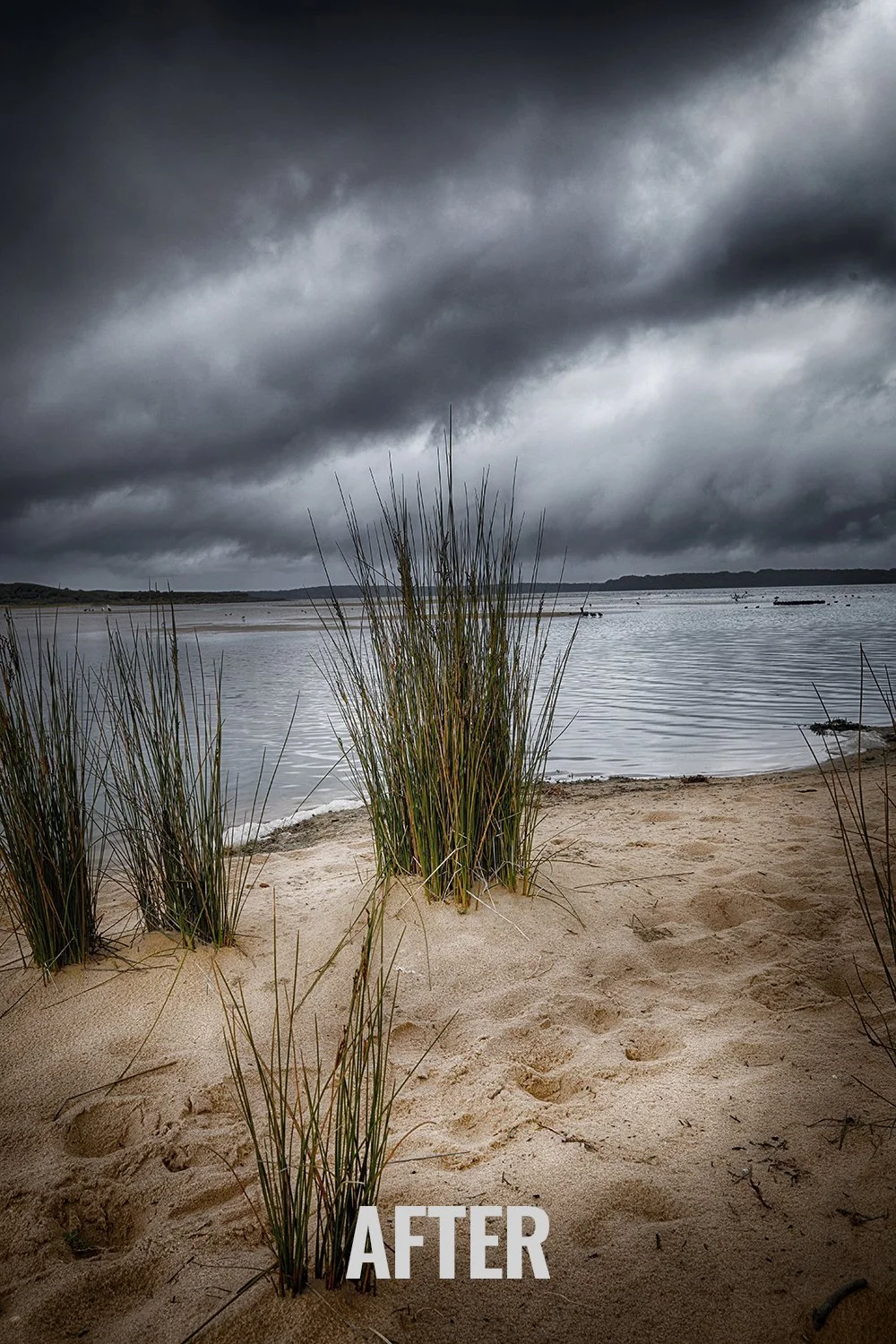Landscape photography lesson
As a professional photographer, I recognise the importance of continuously honing my skills and seeking inspiration beyond your primary genres of food, lifestyle, product, portrait, drinks, and interiors photography. Nature, in particular, can be an incredible teacher, offering valuable lessons in lighting, composition, and creativity. Here are some reasons why incorporating nature into your photography practice is an excellent approach:
Landscape photography is often associated with vast blue skies, golden hour lighting, and striking colors. However, as any seasoned photographer knows, the weather doesn't always cooperate. Overcast, dreary, and flat lighting conditions can make capturing stunning landscapes a challenge. But don't despair! With the right approach, you can turn even the most uninspiring weather into an opportunity for remarkable landscape shots. In this blog, we'll explore how to make the most of bad overcast weather and create captivating images.
Before you even set out with your camera, it's crucial to previsualize the results you want to achieve. Bad weather doesn't mean you can't create beautiful images; it just means you need to adjust your expectations and techniques. Visualize the mood and atmosphere you want to convey in your photograph. Sometimes, overcast conditions can add a dramatic, moody element to your shots that bright sunlight can't replicate.
In overcast weather, the lighting is often flat and lacks contrast. To overcome this, you'll need to adjust your exposure settings carefully. To capture the full dynamic range of the scene, consider bracketing your exposures. This means taking multiple shots at different exposures to ensure you have the highlights and shadows covered. This will provide you with a safety net when you're processing your images later.
When dealing with challenging lighting conditions, shooting in RAW format is essential. RAW files contain a wealth of data that can be manipulated during post-processing, allowing you to recover details and make adjustments without losing image quality. Shooting in RAW is like having a digital negative that you can work with in post-production.
Post-Processing Enhancement
Once you've captured your images, it's time to bring them to life during post-processing. Start by importing your RAW files into your preferred image editing software. You can use Adobe Lightroom, Capture One, or other similar tools to adjust exposure, contrast, and white balance. In bad weather, enhancing the contrast and bringing out subtle details is particularly important.
Nik Software Plugin in Photoshop
One valuable tool for enhancing your landscape photos is the Nik Software plugin, which can be integrated into Photoshop. The plugin provides you with various filters and controls to fine-tune your images. For landscapes in flat lighting, the "Viveza" filter can be particularly helpful for adjusting brightness, contrast, and structure in specific areas of your photo.
Black and White and Desaturation
Turning some of your overcast weather shots into black and white or significantly desaturating them can be a creative way to make the most of challenging conditions. Black and white photography emphasizes shapes, textures, and contrasts, which can work well when color variation is limited. Experiment with different levels of desaturation to create a sense of separation and depth in your images.
Gear Matters
Lastly, the gear you use can significantly impact your results. The Canon 5D Mark III paired with a 24-70mm f/2.8 lens is an excellent choice for landscape photography. The high-quality lens allows for sharp and detailed shots, while the full-frame sensor of the 5D Mark III provides excellent dynamic range and low-light performance.
Conclusion
Landscape photography in bad overcast weather may seem challenging, but with the right approach and the right tools, it can be incredibly rewarding. Previsualization, exposure adjustments, shooting in RAW, and post-processing techniques all play a crucial role in turning a flat, uninspiring scene into a captivating landscape photograph. Don't let the weather discourage you; embrace it as an opportunity to hone your skills and create unique images that stand out from the rest. So next time you encounter gloomy skies, grab your camera and turn those overcast conditions into your advantage!







